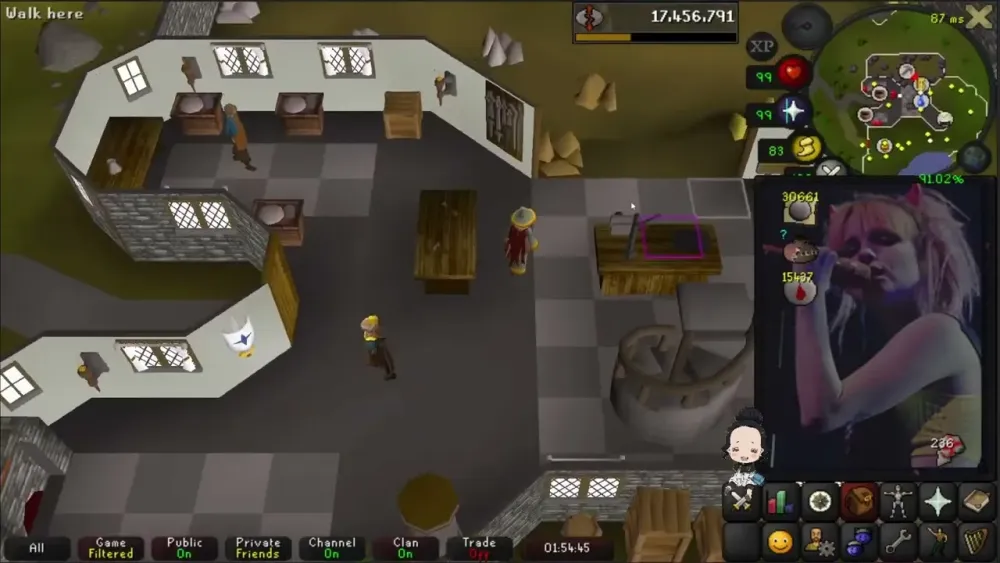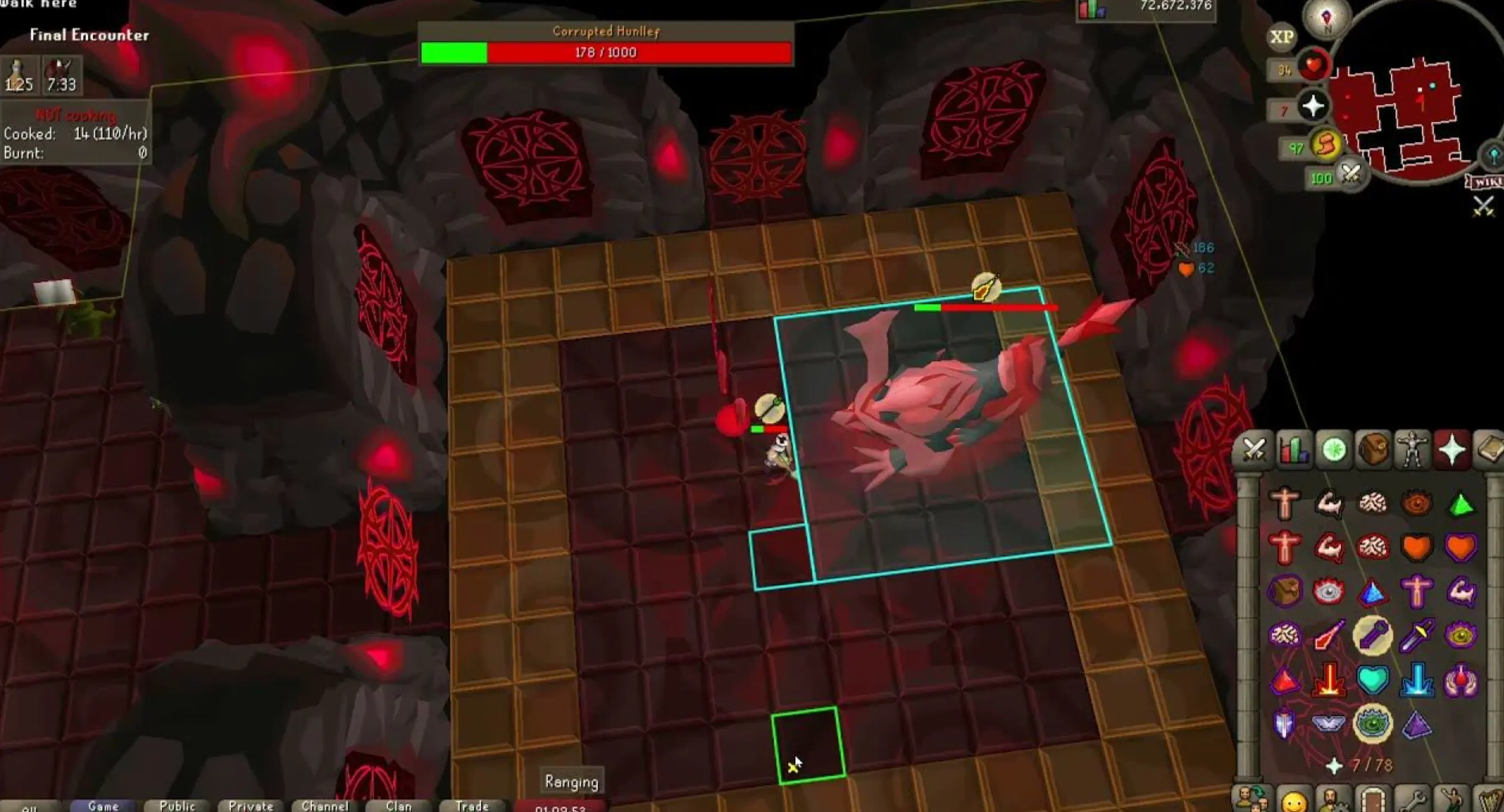Your cart is empty
Ultimate Guide to Blood Runecrafting in OSRS

Blood runecrafting in Old School RuneScape (OSRS) is a lucrative and engaging skill that allows players to create one of the most valuable runes in the game. Blood runes are essential for high-level magic spells, making them highly sought after by players. This guide provides an overview of blood runecrafting, including its mechanics, benefits, and the requirements needed to start crafting these powerful runes.
To begin blood runecrafting in OSRS, players must meet specific requirements that will enable them to craft blood runes effectively. First and foremost, players need a minimum level of 77 in the Runecrafting skill. This high requirement reflects the potency and utility of blood runes in the game.
In addition to the Runecrafting level, players must complete the quest “Abyss Miniquest.” This quest unlocks access to the Abyss, a crucial area for runecrafting various runes, including blood runes. Upon completing the quest, players can enter the Abyss and utilize the shortcut to reach the blood altar quickly.
Players should also consider obtaining a combination of items that can enhance their runecrafting efficiency. The “Runecrafting pouches” are particularly beneficial, as they allow players to carry extra essence, speeding up the crafting process. The larger pouches, such as the “Giant pouch,” can hold more essence, making them more valuable for extensive crafting sessions.
Additionally, having a good supply of “Pure essence” is essential since blood runes can only be crafted from this type of essence. Players can purchase pure essence from various vendors or mine it at specific locations, ensuring they have enough for their crafting needs.
Lastly, while not mandatory, having access to the “Runelight” client can provide valuable quality-of-life improvements, such as tracking runecrafting experience and offering various visual enhancements that make runecrafting more manageable.
How to Start Blood Runecrafting

If you’re ready to dive into blood runecrafting in Old School RuneScape (OSRS), the first step is gathering the necessary items and skills. Here’s how you can get started:
- Requirements: To craft blood runes, you need to have reached level 77 in the Runecrafting skill.
- Quest: Complete the quest “The Blood Pact” to unlock blood runecrafting. This quest introduces you to the mechanics and lore surrounding blood runes.
- Items Needed: You will need a Runecrafting talisman or a Runecrafting staff to access the Blood Altar.
- Recommended Gear: Equip items that enhance your Runecrafting efficiency, such as the Robe of the Abyss or Runecrafting gloves. These items can help reduce the chance of failure while crafting runes.
Once you have the required skills, quest completion, and gear, you’re almost ready to craft your runes. Make sure to gather the following materials:
- Essence: You can use pure essence for crafting blood runes. Stock up on these by mining or purchasing them from other players.
- Teleportation Methods: Familiarize yourself with teleportation methods to quickly reach the Blood Altar, such as the Amulet of glory or the Home Teleport spell.
With your skills and items in hand, you can head to the Blood Altar and begin crafting blood runes!
Location of the Blood Altar
Finding the Blood Altar is crucial for your runecrafting journey. The Blood Altar is located in the following area:
| Location | Coordinates | Access Method |
|---|---|---|
| Blood Altar | X: 3520, Y: 3020 | Use a talisman or staff to enter the altar |
To get to the Blood Altar, head to the Mort’ton area, which is south of the Fremennik Province. Here’s a step-by-step guide:
- Start at the Fremennik Lodestone or Mort’ton if you’ve already been there.
- Make your way east toward the swamp area, navigating around the various monsters and hazards.
- Once you reach the coordinates mentioned above, look for the entrance to the altar.
Once you have entered the altar, you can begin crafting your blood runes. Happy runecrafting!
5. Runecrafting Experience and Tips
When it comes to Runecrafting in Old School RuneScape (OSRS), gaining experience efficiently is key to leveling up quickly. Here are some practical tips to help you maximize your Runecrafting experience:
- Use the right equipment: Equip items that enhance your Runecrafting capabilities. The Runecrafting outfit increases your experience gained by 2.5% when wearing the full set.
- Utilize the Abyss: Accessing the Abyss allows you to craft runes more quickly. Completing the Abyss mini-quest will unlock this feature, making it easier to navigate to different altars.
- Plan your routes: Familiarize yourself with the quickest routes to each altar. Using a combination of teleportation spells, items, and the skill of agility can save you a lot of time.
- Use the Rune Essence: Always use Rune Essence instead of Pure Essence when crafting runes. You will gain more experience per rune crafted.
Additionally, try to keep track of your experience gains and set small goals. This not only keeps you motivated but also allows you to see how far you’ve come. Don’t forget to take breaks to avoid burnout!
6. Best Methods for Training Runecrafting
Training Runecrafting can be a rewarding experience, especially when you pick the right methods. Here’s a breakdown of some of the best methods for leveling up your Runecrafting skill:
| Level | Method | Experience per hour | Notes |
|---|---|---|---|
| 1-9 | Air Runes | 5,000 | Start with air runes; it’s the easiest way to train. |
| 9-14 | Mind Runes | 10,000 | Craft mind runes for quick experience gains. |
| 14-20 | Water Runes | 15,000 | Continue with water runes for solid XP. |
| 20-30 | Earth Runes | 20,000 | Earth runes offer a nice XP boost. |
| 30-44 | Fire Runes | 25,000 | Fire runes are a great option until you reach level 44. |
| 44+ | Blood Runes | 40,000+ | Once you hit level 44, blood runes can earn you significant XP. |
Remember that efficiency is key. Choose methods that fit your playstyle and available resources. Don’t hesitate to switch it up if you feel like you’re losing interest. Happy Runecrafting!
7. Profitability of Blood Runes
When it comes to runecrafting in Old School RuneScape (OSRS), blood runes stand out not just for their utility but also for their profitability. If you’re considering diving into blood runecrafting, understanding the financial aspect is crucial.
Blood runes are used primarily in high-level spells and are in constant demand. Here are a few factors that contribute to their profitability:
- Market Demand: Blood runes are essential for various spells, especially those used in combat, making them highly sought after.
- Crafting Method: Crafting blood runes at the Blood Altar yields a higher profit margin compared to lower-tier runes.
- Pricing: Prices fluctuate based on the in-game economy, but blood runes typically maintain a stable market value.
- Experience Points: Each blood rune crafted also provides a decent amount of experience, allowing for a profitable side hustle while leveling up your runecrafting.
To give you a clearer picture, here’s a simple table comparing blood runes with other types of runes in terms of profit per hour:
| Rune Type | Profit per Hour |
|---|---|
| Air Runes | ~100,000 GP |
| Fire Runes | ~150,000 GP |
| Blood Runes | ~450,000 GP |
In summary, blood runes offer an excellent profit opportunity, especially for players with the necessary skills and quests completed. Whether you’re a seasoned runecrafter or a newbie, investing time in blood runecrafting can be quite rewarding.
8. Common Mistakes to Avoid
Diving into blood runecrafting can be profitable, but there are common pitfalls that many players encounter. By being aware of these mistakes, you can streamline your efforts and maximize your efficiency.
- Ignoring Quests: Failing to complete the required quests for accessing the Blood Altar can limit your runecrafting capabilities. Make sure to complete quests like “The Blood Pact” to unlock this feature.
- Neglecting Inventory Management: Always check your inventory before heading to the altar. Running out of essence or other supplies can waste time and reduce your profits.
- Not Tracking Market Prices: Prices for blood runes can fluctuate. Not keeping an eye on the Grand Exchange can lead to selling at a loss. Use tools or websites to monitor market trends.
- Failing to Use the Right Gear: Equip your character with gear that enhances your runecrafting efficiency. Consider using items like the Runecrafter’s robe for added benefits.
- Overlooking Experience Gains: While profit is essential, don’t forget that runecrafting experience is equally important for leveling up. Balance your focus between profit and experience.
Avoiding these common mistakes can significantly enhance your blood runecrafting experience. Stay aware, plan ahead, and you’ll find yourself crafting those blood runes with ease and efficiency!
Conclusion and Final Tips
Blood runecrafting in Old School RuneScape (OSRS) offers not only an efficient means to generate runes but also a rewarding experience for players seeking to enhance their magic skills. As you progress through the intricacies of blood runecrafting, keep these final tips in mind:
- Utilize the Abyss: Entering the Abyss is crucial for accessing the Blood altar quickly. Ensure you have the required levels and gear to navigate safely.
- Efficient Inventory Management: Always carry the essentials—runes for teleportation, food for healing, and stamina potions to maintain energy levels.
- Use the Right Gear: Equip gear that boosts your runecrafting level and reduces damage taken from Abyssal creatures.
- Join a Clan: Engaging with a community can provide valuable tips and support, especially during group runs in the Abyss.
- Plan Your Routes: Familiarize yourself with the best routes to and from the Blood altar to minimize travel time.
In conclusion, mastering blood runecrafting can significantly enhance your OSRS experience, providing both economic benefits and a deeper understanding of the game’s mechanics. Stay focused, practice regularly, and enjoy the journey of becoming a skilled runecrafter.

